Our Sod
Helpful guidelines for installing and maintaining your natural sod
Soil Preparation
- Perform a soil test, if desired, to determine soil nutrients.
- Remove all existing turfgrass (if needed). When bare soil is exposed continue to remove all debris, organic matter, stone, etc. that is larger than 1/2 inch diameter.
- Till soil to depth of 3 to 8 inches or import new topsoil, if desired, to achieve 3 to 8 inch depth.
- Bring tilled soil to rough grade. Do NOT re-compact soil. Sod likes loose soil for root growth.
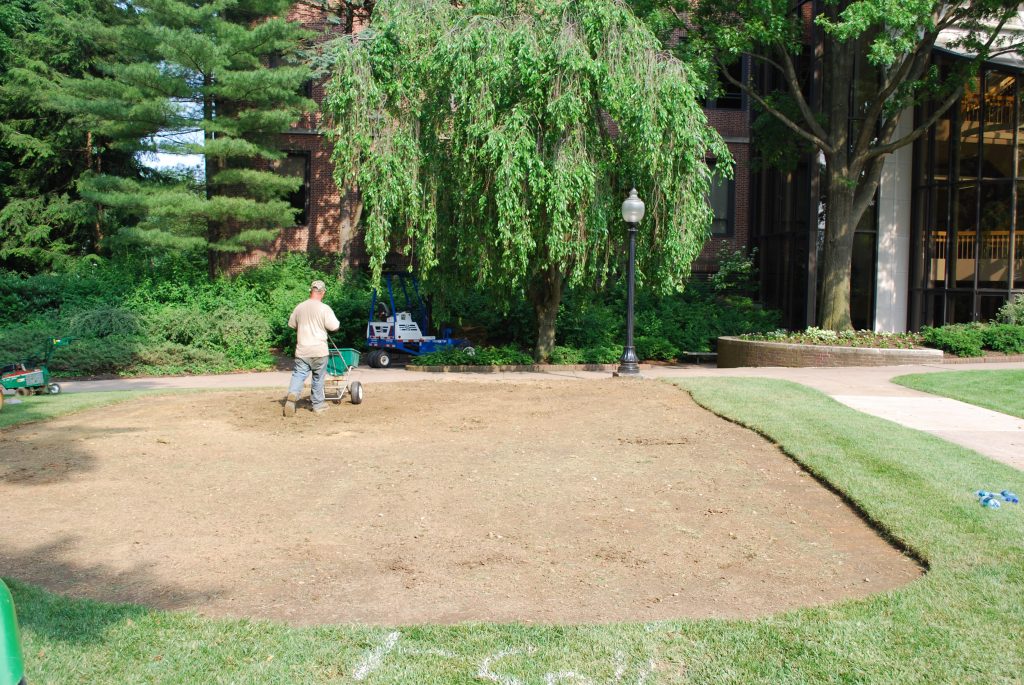
Lime & Fertilizer
These products are available for purchase with your sod.
- Apply lime and fertilize based on soil test. If soil test was not performed then the basic rule for Pennsylvania is to apply 2-1/2 lbs. of 10-20-20 fertilizer per 1,000 square feet and 25 lbs. of lime per 1,000 square feet.
- Mix lime and fertilizer into soil 3 to 4 inches in depth.
Grading
- Final grade the soil surface by power or manual raking.
- Allow 1/4 to 1/2 inch along existing lawn areas and rake level with curbs, walks, etc. to allow from some settlement.
Installing Sod
- Start at a straight edge (sidewalk, driveway, etc.) or use a string. Also start at the top of any slopes you may be working on and finish at bottom.
- Work from the finished sod area, rather than the soil, when possible. *Note that this is not possible when working on a sloped area.
- Stagger the sod pieces in brickwork fashion. Butt edges together tightly without overlapping.
- Use a spade or knife to trim ends or irregular pieces and around any trees, flower bed, stepping stones, etc.
- Use sod pins only when you are working on a steep slope. Pins and mallets can be purchased with your sod. Average pins needed are 3 per piece of sod.
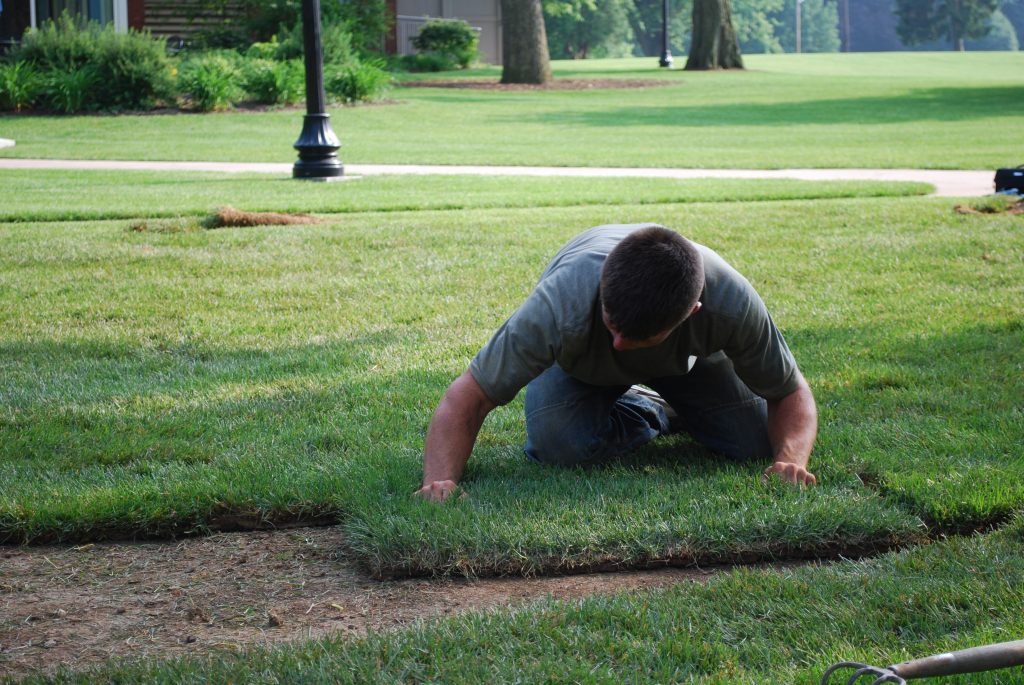
Rolling
This is a recommended step, but it is not required for successful sod growth. Rolling eliminates irregularities and air pockets.
- Roll sod BEFORE watering with a water filled lawn roller, pull behind roller, or your lawn mower with the deck down and blade off. Small areas may also be hand tamped.
Watering
- Saturate the sod area immediately after installation. Be sure the water has gone through your sod and in the soil.
- Hot and sunny days create extreme stress on new sod. You will need to keep the freshly installed sod cool with a small amount of water during the heat of the day. Do not oversaturate the area before the installation is complete.
- Sod installed in or below 75 degree weather should be watered once a day for the first 10 days. This watering should happen around 1pm and should consist of a 20 minute soaking.
- Sod installed in or above 75 degree weather should be watered 3 times a day for the first 10 days. These waterings should happen around 10am, 1pm and 4pm and should consist of a 20 minute soaking.
- After sod has rooted (you can check this by tugging on a piece of sod) watering can be reduced to an as needed basis. During the first year of its life, the sod should be watered on very hot days for 20 minutes around 1pm.
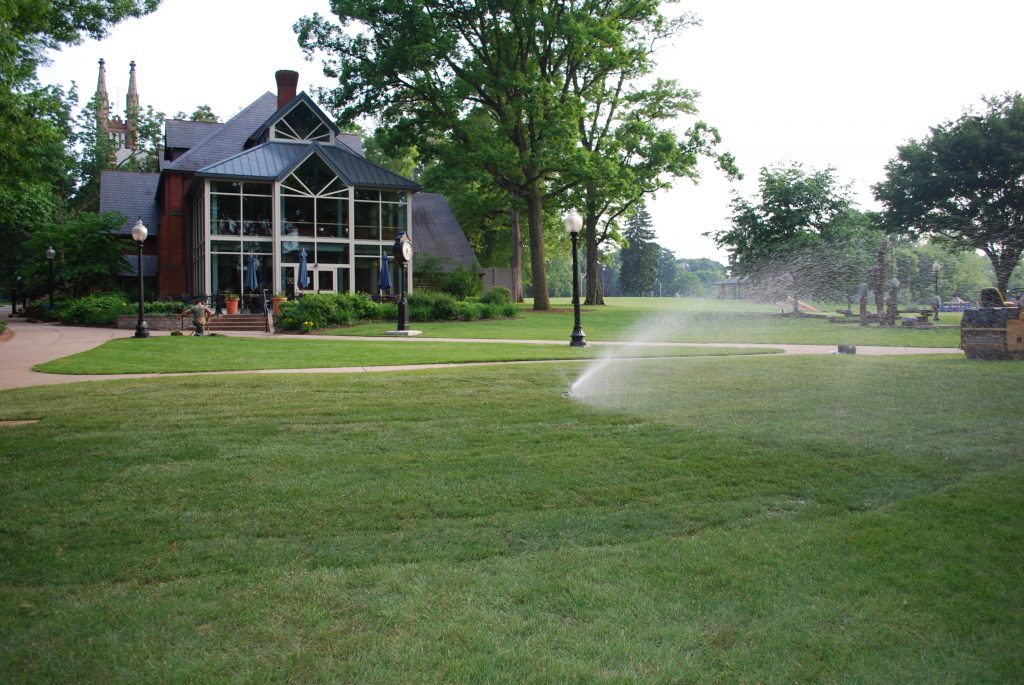
Mowing – Initial Maintenance
- The first mowing should be made after the sod has started to root or when sod pieces cannot be easily pulled up from the soil.
- On the first mowing, be sure to have the mower set high enough to prevent removal of more than 1/3 of the leaf blade, and reduce engine rpm’s to avoid lifting sod.
- If for some reason the lawn becomes bumpy with footprints etc., roll before mowing, but only if sod is rooted. Rolling in cris-cross directions when the soil moisture is medium, will help to smooth lawn surface and prevent “scalping” when mowing.
- After sod is fully rooted, follow normal mowing procedures cutting bluegrass at 1-½ to 2 inches, fescue 2 to 3 inches, alternating directions, collecting clippings and keeping mower blades sharp.
CAUTION: Mowing should be frequent enough that no more than 1/3 of the total leaf surface will be removed in any given mowing. Leaving clipping on the lawn by using a “mulching” blade on your mower returns moisture and nutrients to the grass roots, without affecting the thatch layer, and is highly recommended.
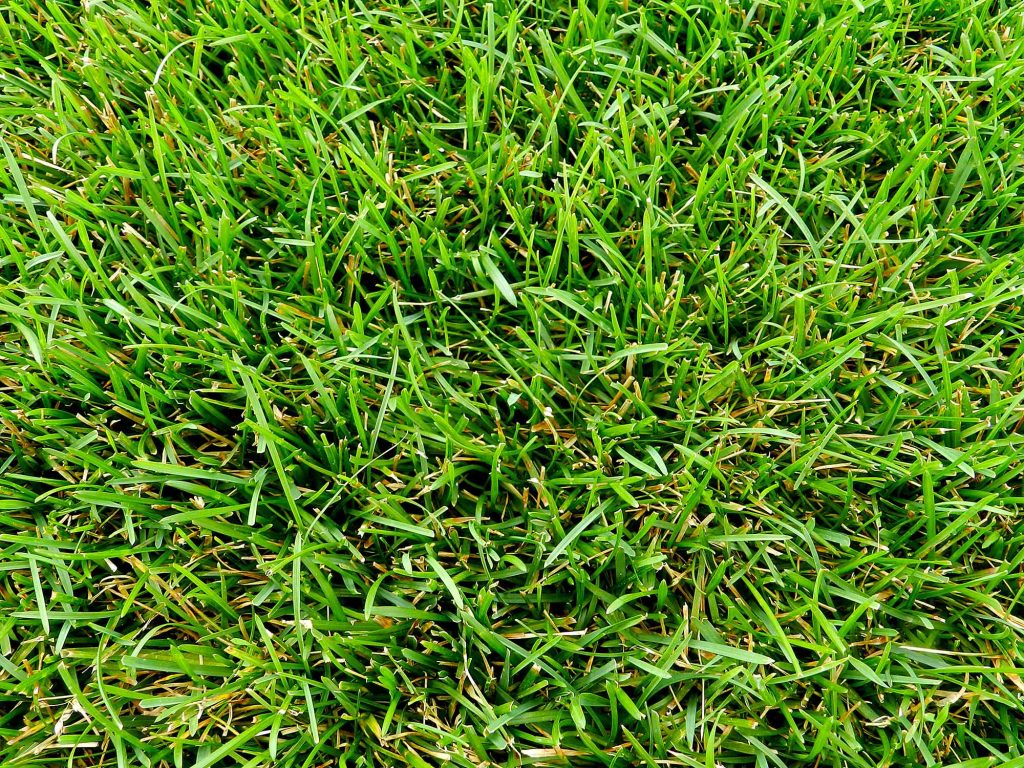
Irrigation – Initial Maintenance
- After sod is well rooted (2-6 weeks after installation) water will be necessary if grass starts to wilt during hot days.
- Infrequent, deep irrigation is desired over light, shallow sprinklings.
CAUTION: Water should never be applied at rate that is faster than it can be absorbed by the soil.
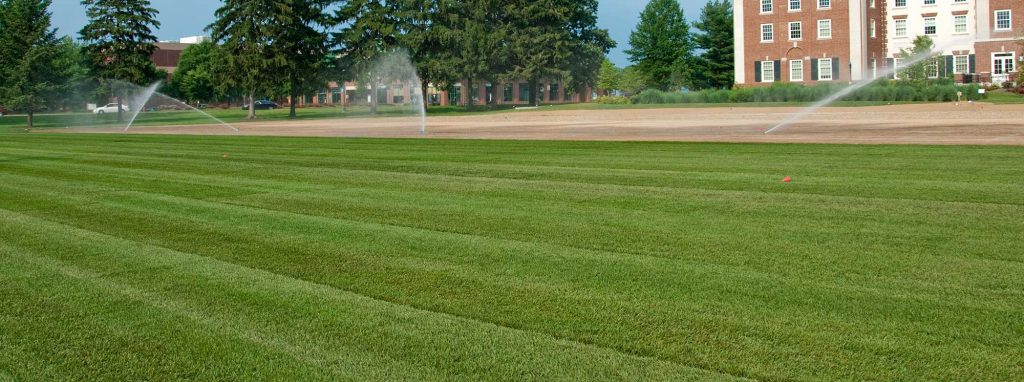
Important Tips
- Sod is a perishable item and should be installed immediately upon pick up or delivery.
- Never allow grass to wilt. If sod blades feel the slightest bit “crispy” to the touch then water must be applied immediately.
- Keep traffic off sod during heavy irrigation periods. During the first 2 weeks after sod installation all traffic should be keep to an extreme minimum.
- Un-installed sod has a short shelf life and should be kept in a cool, shady area and watered.
- Lime, fertilizer, sod pins and seed can all be purchased from Sporting Valley with your sod.
